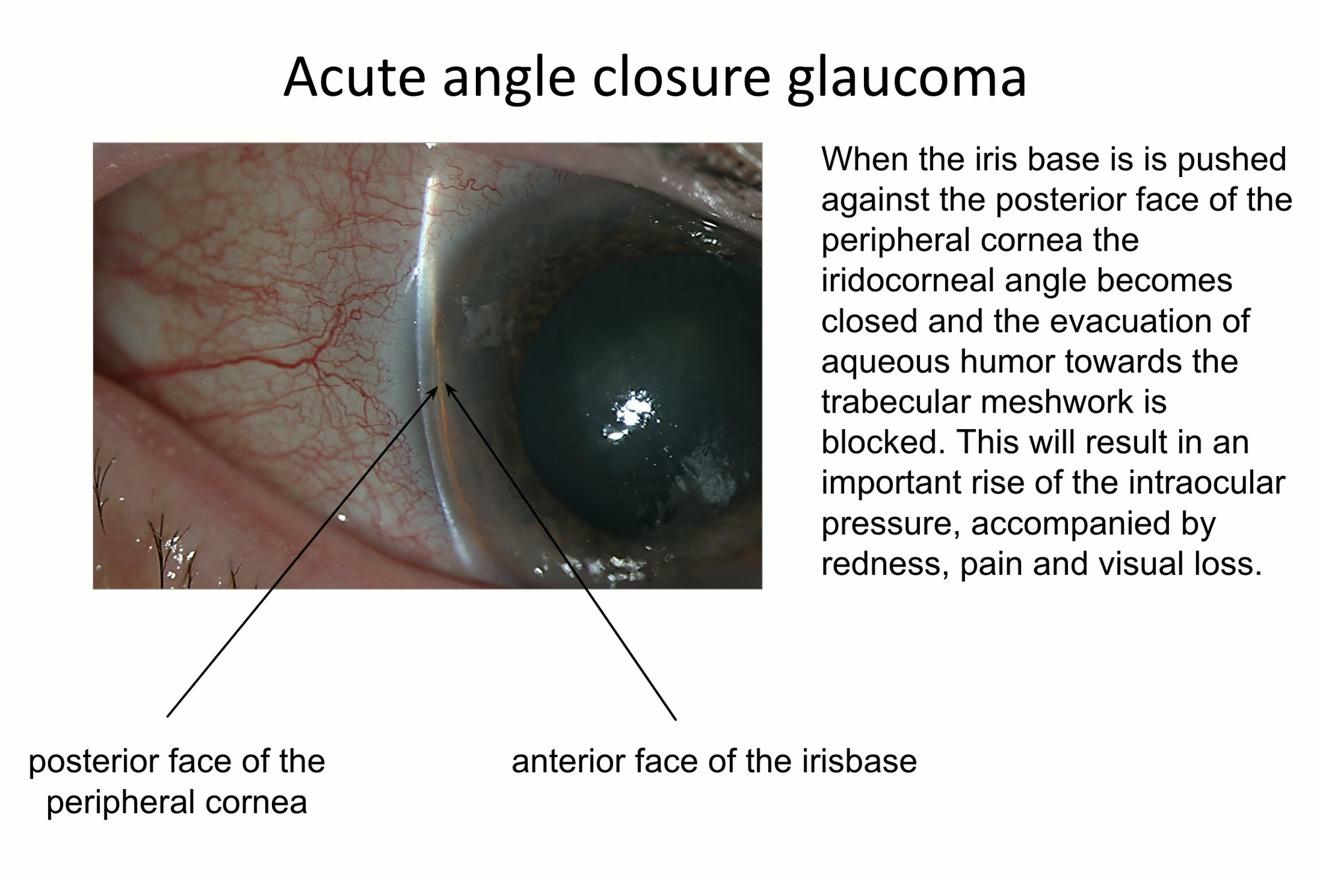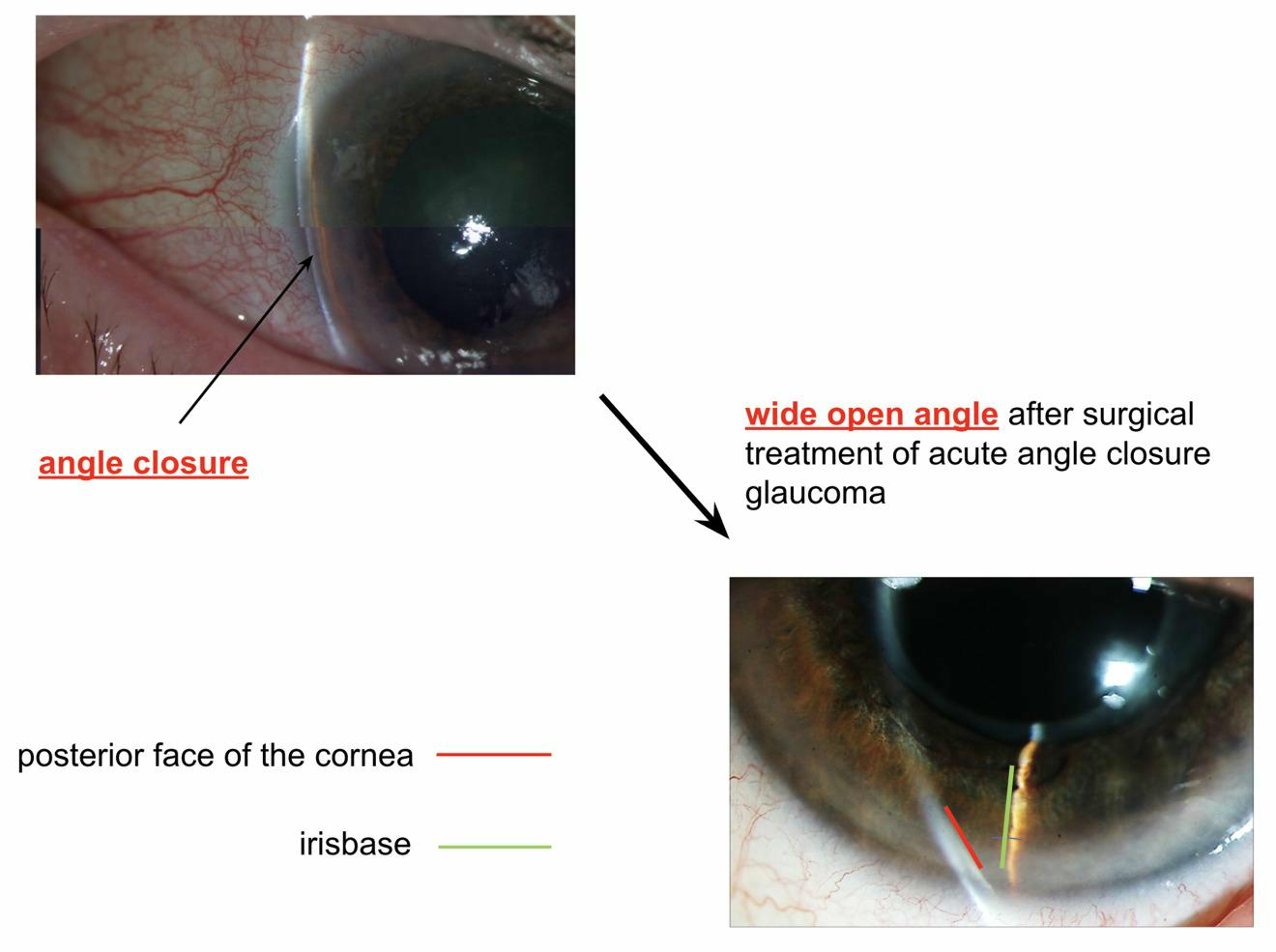What is acute angle-closure glaucoma ?
Acute angle-closure glaucoma
Chronic open-angle glaucoma is characterized by its chronic, insidious nature, absence of pain and paucity of symptoms. This type of glaucoma, acute angle-closure glaucoma, is very different and in many respects the opposite: it is an acute, often extremely painful disease with a lot of symptoms: redness of the eye, pain, headache, sometimes vomiting and rapid deterioration of vision. The intraocular pressure goes up very rapidly, within hours, to reach very high values because the root of the iris sticks to the cornea blocking completely the drainage structures in the angle (hence the term acute angle-closure glaucoma): the evacuation of intraocular fluid is abruptly and completely blocked. Acute angle-closure glaucoma often starts in the evening or at night. The excruciating pain and the rapid vision loss often orient the patient to the emergency department. Prompt diagnosis and adequate treatment are mandatory to avoid serious and permanent loss of vision. Prevention for this type of glaucoma is possible. The ophthalmologist is often able to identify the anatomic factors that predispose to this type of glaucoma. If you are at risk, a simple preventive laser procedure may lessen the risk of developing angle-closure glaucoma.


Acute angle-closure glaucoma is more prevalent in women, in far-sighted patients and in patients with advanced cataract (opacification and swelling of the lens). It is also good to know that the intake of certain drugs may provoke an attack of acute angle-closure glaucoma. You can read this warning on the package insert of many drugs, especially those against common cold, diarrhoea, depression and Parkinson’s disease. Almost all these drugs have a pupil widening effect which may trigger acute angle-closure glaucoma. It is important to realize that these drugs have no influence at all on chronic open-angle glaucoma.
